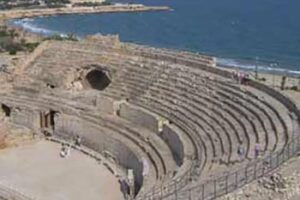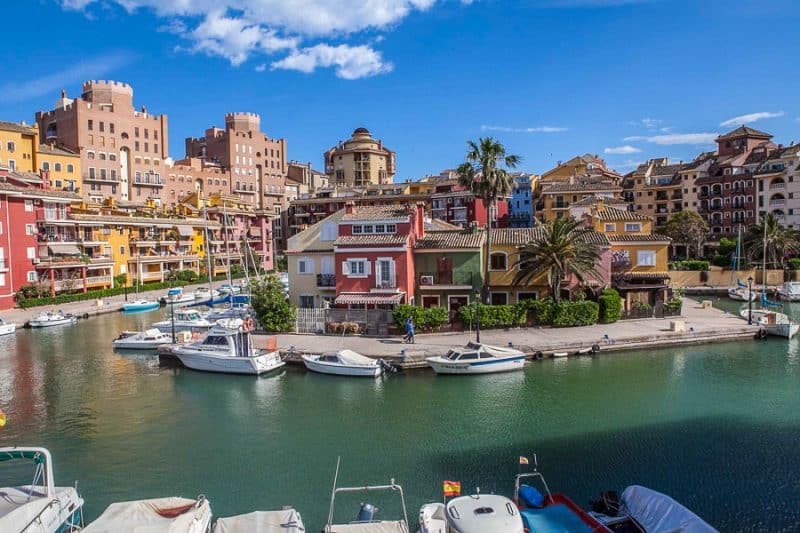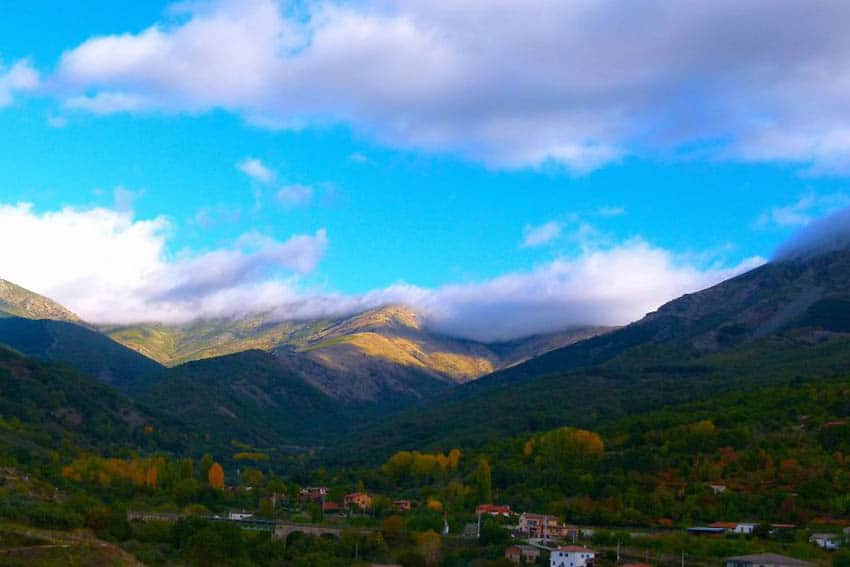
Spain’s Extremadura region reveals the true taste of smoky paprika, not like the red dust I have at home
By Jackie Sheckler Finch

When Christopher Columbus returned to Spain from his second voyage to the Americas, he brought a very special chili pepper that was served to his patrons, King Ferdinand and Queen Isabella.
Even though the unusual plant was a bit spicy for the royal tongues, Spanish monks recognized its tasty value and jealously guarded the culinary treasure behind cloistered walls.
However, the secret slowly began to leak out.
Today, the pepper used for paprika and the smoky process that creates its distinctive taste have combined for a staple in many cooks’ kitchens.

In the Extremadura region of Spain, the traditional paprika recipe has become one of the area’s main sources of wealth and worldwide renown.
“The difference in our paprika,” said Carmen Jimenez, “is that we don’t dry the peppers in the sun or in industrial ovens. We smoke the peppers over an oak wood fire and that’s what gives the paprika its smoky taste.
We are the only place in the world where paprika is made that way.”
A Paprika Museum
On a tour through the Pimentón de la Vera Museum in Cáceres, museum director Jimenez walked me through the history of paprika and its uses. Until I visited Extremadura, my poor paprika sat like red dust in my kitchen spice drawer.
Sure, I would bring the can out once in a while to sprinkle some red powder over deviled eggs or potato salad. But I used it purely as a color accent. To me, paprika didn’t seem to have much taste.
Then I encountered true smoky Spanish paprika and, oh, my, the difference.
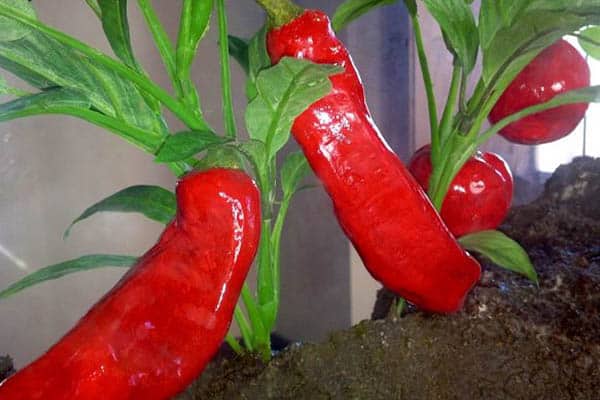
The secret, along with the drying process, is the marvelous growing weather in the valley of de la Vera, Jimenez said. Seedlings are transplanted in May just in time for spring rains and sunshine.
In October, the sun-ripened peppers are hand-picked by local farmers just as they were by monks back in the 16>th century.
Famous Smoking Process
The peppers are slowly bathed in oak wood smoke for 10 to 15 days in the upper level of smokehouses.
The peppers are patiently turned by hand each day for ideal dryness. In old days, Jimenez said, farmers would sleep nude around the smokehouse fires.
“Then when they began to get cold they knew it was time to put more wood on the fire for the peppers,” she said.
The plump peppers are dried down by almost 75 percent in the smoking process. The next step is to remove the stems and seeds before the peppers are ground in a stone mill.
“That is very important, that they are ground in a stone mill,” Jimenez said. Traditional stone wheels are used so that friction doesn’t create heat that would strip some of that deep paprika flavor.

To see that final step, I visited the Union of Producers of Paprika factory where the peppers are processed. The factory is open to visitors and is a great place to buy inexpensive colorful tins of paprika in a small window shop.
The result is what the locals call “red gold.” Pimentón or smoked paprika comes in three versions, with varying levels of heat depending upon the chilies used.
Dulce or sweet is slightly sweet with very little heat; agridulce or bittersweet has only a trace of sweetness with an underlying heat, and picante is hot.
I generally don’t care for hot spices but the picante doesn’t seem hot to me, just spicier with a deeper taste. If you are not familiar with Spanish smoked paprika, it might be best to taste it or try it slightly in dishes until you discover the level you like.
Be sure to look for the brick-red paprika that has “Consejo Regulation Denominación de Origen” or D.D: Pimenón de la Vera somewhere on the container. That is the Spanish government’s assurance that the paprika was made in La Vera.
Touring around Extremadura for a week, I began to look for that deep red color and smoky flavor that is used so often in Spanish cooking.
Put it on Everything!

I tasted it in glorious lamb stew, savored it sprinkled on heated goat cheese, detected it in fried potatoes, atop fried eggs, drizzled on grilled veggies and, of course, on the traditional shepherd meal of migas or fried stale bread.
A friend also shook some of the picante in a plastic bag of almonds and – voilà– a scrumptious treat.
For my trip home, I had 15 tins of La Vera paprika safely tucked in my carry-on luggage. Going through security at the Madrid airport for my flight back to Chicago, the security officer just smiled when he saw my paprika tins.
Turns out, his hometown was Jaraiz de la Vera and he certainly knew a good thing when he saw it.
I’m so glad I have finally discovered Spanish smoked paprika and added its distinctive taste to my home kitchen.
For more information: Contact Spanish tourism at www.spain.info or Extremadura tourism at www.turismoextremadura.com
Spanish Migas
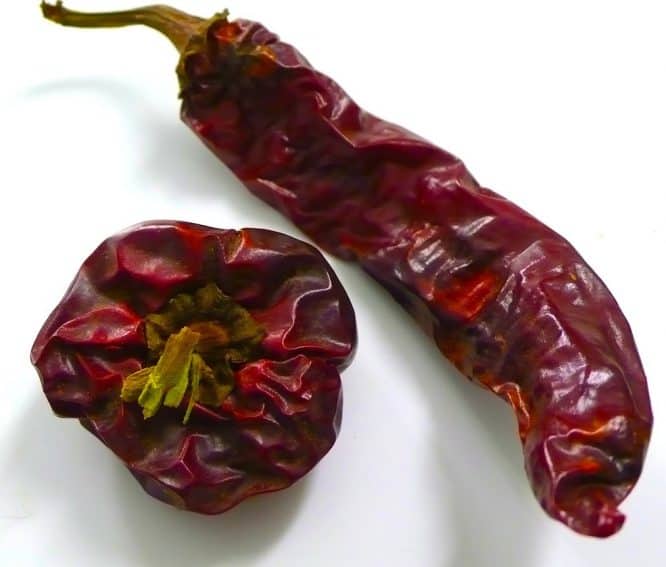
Roaming from place to place to tend their flock, Spanish shepherds created a tasty inexpensive dish prepared over an open fire in a single pan. The basic ingredient was easy to find – stale bread.
Nothing went to waste in the humble life of a shepherd and the dish known as “migas” was comforting, filling and simple to prepare. Today, migas – which literally means “breadcrumbs – is still popular in Spain, served in homes, bars, hotels and fancy restaurants.
The first time I tasted migas was as an appetizer at Parador de Jarandilla de la Vera. My serving was topped with a fried egg and generously sprinkled with the famed Extremadura paprika. Delicious!
A friend got a free helping of migas when he ordered a beer in a Spanish bar in Cáceres. That’s something many Extremadura drinking spots do – serve a complimentary savory along with a drink.
It probably increases the thirst of the drinker but also it is done, I think, because Extremadura folks are very hospitable.
Migas Recipe
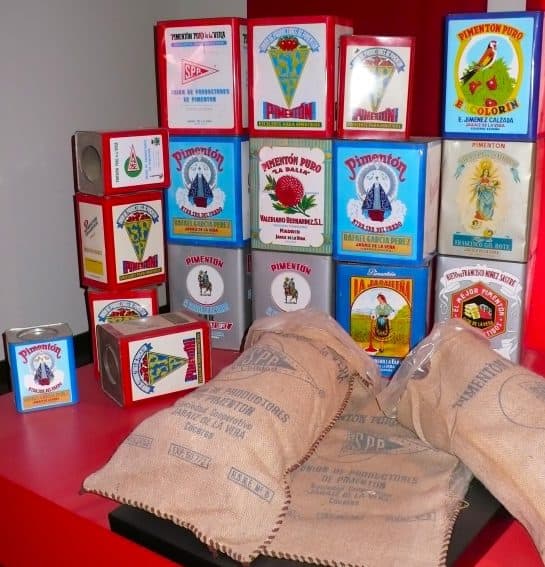
1 loaf day-old French or Italian bread
6 ounces water
2 cloves garlic, peeled
3 tablespoons virgin olive oil
2 teaspoons Spanish smoked paprika or to taste
Salt to taste
2 tablespoons minced onion
2 tablespoons finely diced slab bacon
3 tablespoons diced sweet chorizo or minced cured ham
Remove crusts and cut stale bread into cubes, place in a bowl. Sprinkle water over bread, using more water if necessary until bread is moistened but not soaking wet.
Cover and allow to sit for about a half hour (some cooks cover it with a clean dish towel and let it sit overnight).
Fry bacon and chorizo, drain the meat and set aside. Add olive oil to meat juices in the skillet and fry garlic cloves, pressing with the back of a wooden spoon. Remove garlic. Fry onion until golden brown. Place bread into the frying pan, stirring constantly with a large wooden spoon or spatula.
Break bread into smaller pieces as it fries. Add cooked meat. Sprinkle with paprika and salt. Cook until bread clumps into small balls that are toasted on the outside and soft inside. Serves four.
Some cooks add fried eggs atop the migas. Some add green or red peppers, olives or salt pork. Each region and even each family seems to have developed a special recipe for their own tasty migas.
Eurail Passes: What to Know about Buying a Europe Train Pass
- Buddy Holly Museum in the Heart of Texas - September 15, 2024
- American Melody Cruise: Perfect! - January 29, 2024
- Spanish Museums Honor Picasso on 50th Anniversary - December 19, 2023



